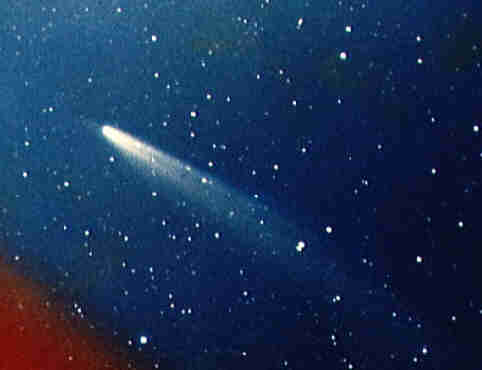Space EnvironmentWhat is in space? |
Comets are often referred to as "dirty snowballs." They are left over from the formation of stars and planets billions of years ago. Before zipping around the Sun with their characteristic big tails, comets that we see in our solar system start out as big chunks of rock and ice just floating around in something called the Oort Cloud. When the gravity from a large passing body, like a star, becomes strong enough, some large chunks of ice get pulled away from the cloud and head toward the Sun. As that ball of ice gets close enough to the Sun, its heat begins to melt some of the ice that makes up the comet. The melted ice becomes a gaseous tail that extends away from the source of the heat (in this case, the Sun). The tail is pushed out by the Sun's solar wind.
What keeps the comet in motion and guides its path is the gravity from all the planets and stars it passes. When a comet is in our solar system, most of the gravity affecting the comet's motion is due to the Sun. As a comet gets closer to the Sun it moves faster and faster, because the closer an object is to the Sun the stronger the Sun's gravity acts on it. As well as moving faster near the Sun, the comet's tail will grow in length since more of the ice will be evaporating.

Comet Kohoutek NASA Photo ID: S74-17688 From NASA's Image Exchange http://nix.nasa.gov/nix.cgi
![]()
What is in space besides planets and stars?
How do scientists know what the path of an object in space will be?
What is an orbit?
What is gravity?
What is heat?
How does heat move?
![]()
What is solar wind?
How do we know what's in space?
![]()